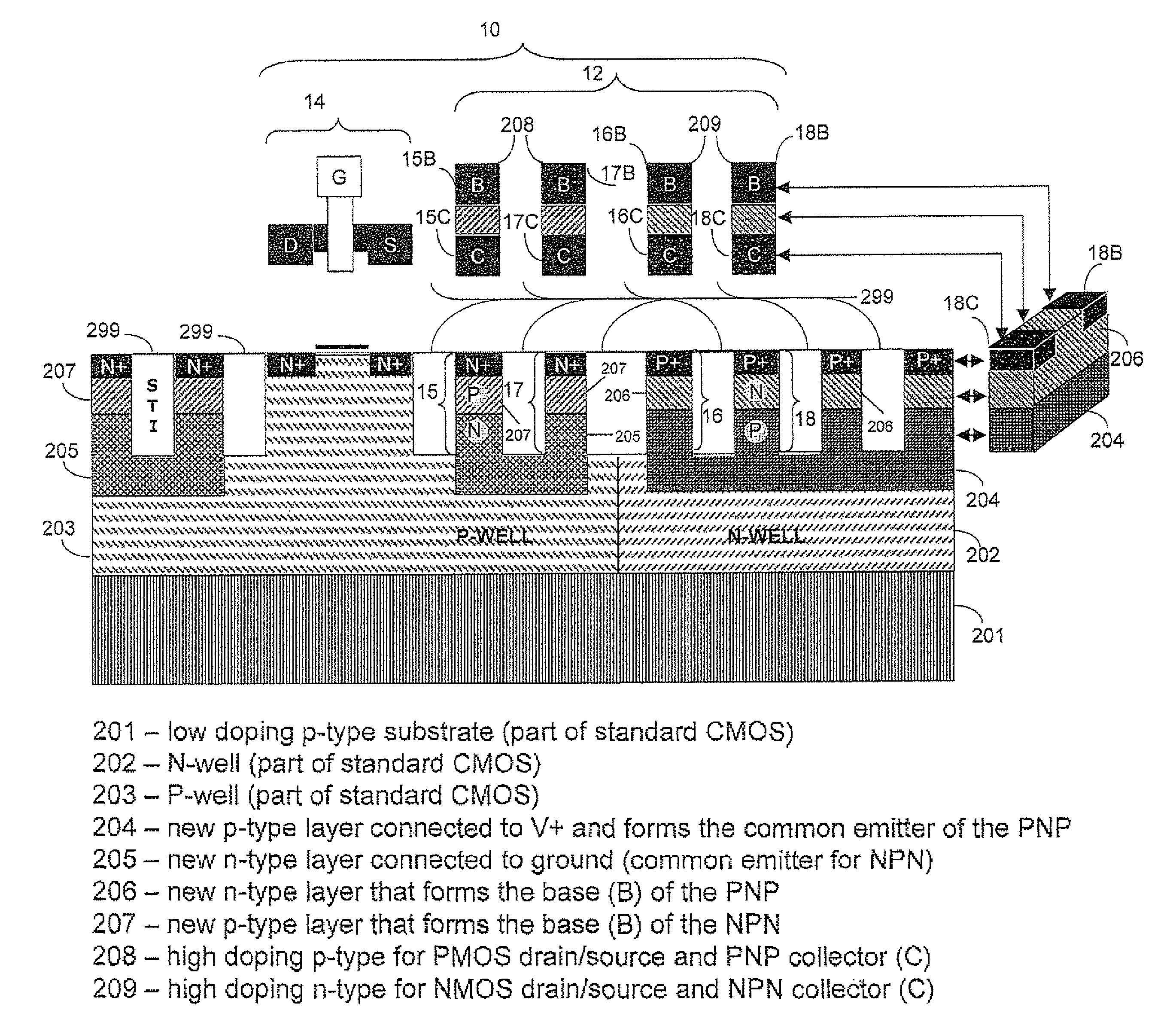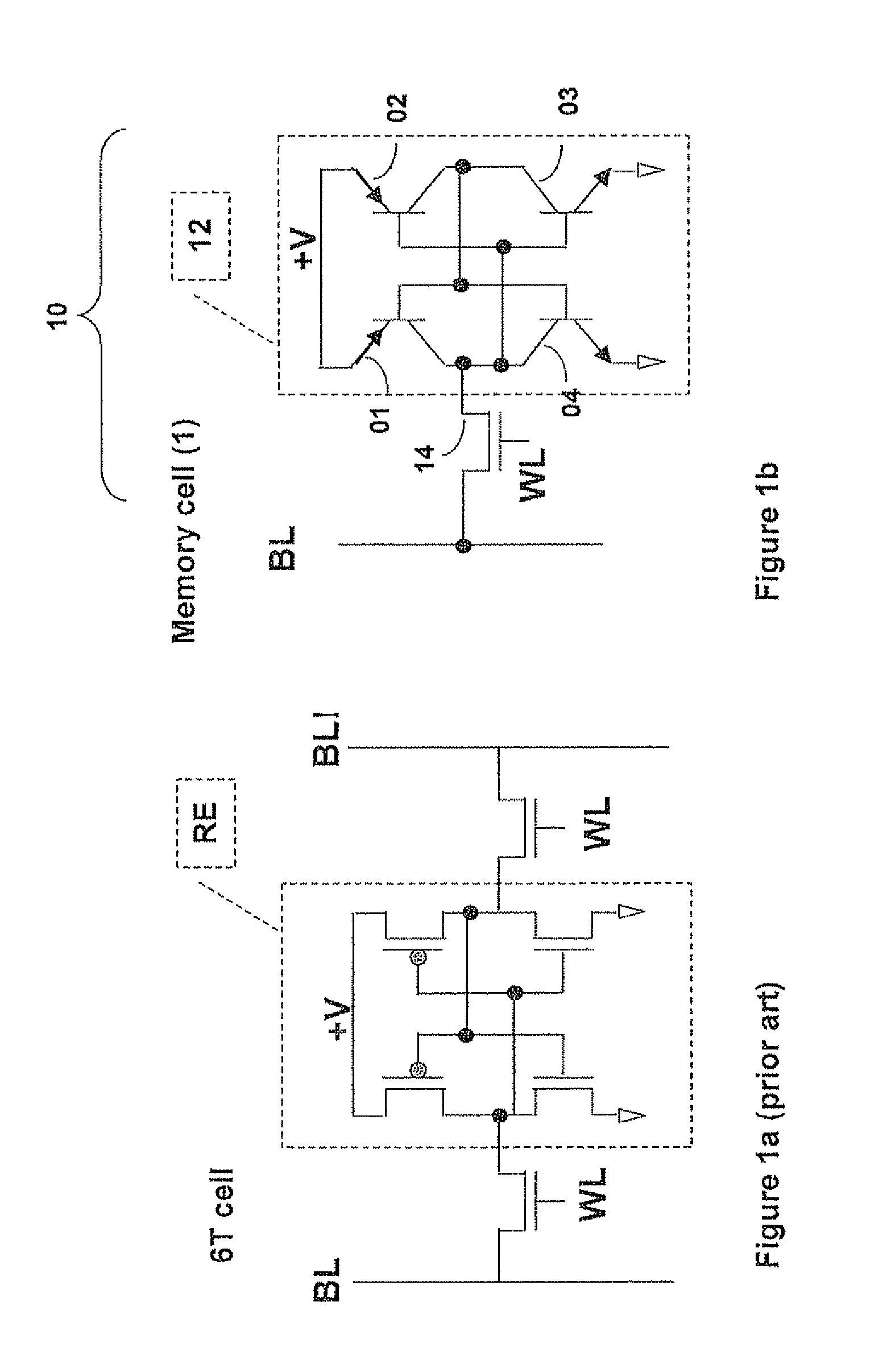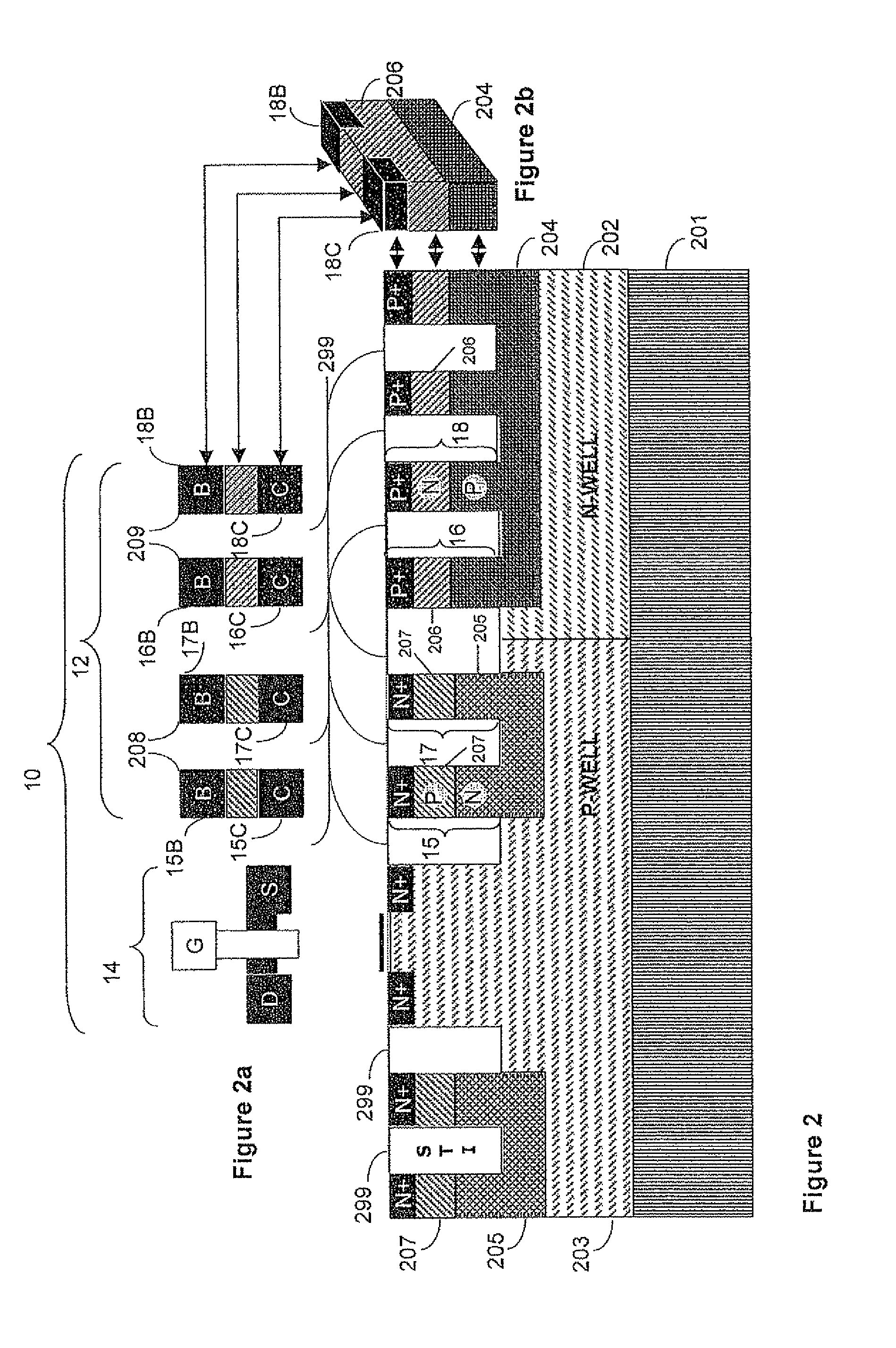Four-transistor and five-transistor BJT-CMOS asymmetric SRAM cells
a technology of asymmetric sram cells and transistors, applied in pulse generators, pulse techniques, instruments, etc., can solve the problems of increasing technological barriers and circuits increasing manufacturing complexity significantly
- Summary
- Abstract
- Description
- Claims
- Application Information
AI Technical Summary
Benefits of technology
Problems solved by technology
Method used
Image
Examples
Embodiment Construction
[0026]The following detailed description is of the best currently contemplated modes of carrying out the invention. The description is not to be taken in a limiting sense, but is made merely for the purpose of illustrating the general principles of the invention, since the scope of the invention is best defined by the appended claims.
[0027]The present invention generally provides a memory cell for RAM memory and for other volatile memory such as a flip-flop and a register file. The cell may comprise a retention element and either an adjacent NMOS or adjacent PMOS transistor operatively engaged to the retention element. The retention element may be assymetric and may be comprised of four bipolar junction transistors, each of which may be vertically stacked. Other than the retention elements the chip may use CMOS transistors. The NPN bipolar junction transistors may share an N layer and the PNP bipolar junction transistor may share a P layer. For further compactness, in one embodiment...
PUM
 Login to View More
Login to View More Abstract
Description
Claims
Application Information
 Login to View More
Login to View More - R&D
- Intellectual Property
- Life Sciences
- Materials
- Tech Scout
- Unparalleled Data Quality
- Higher Quality Content
- 60% Fewer Hallucinations
Browse by: Latest US Patents, China's latest patents, Technical Efficacy Thesaurus, Application Domain, Technology Topic, Popular Technical Reports.
© 2025 PatSnap. All rights reserved.Legal|Privacy policy|Modern Slavery Act Transparency Statement|Sitemap|About US| Contact US: help@patsnap.com



